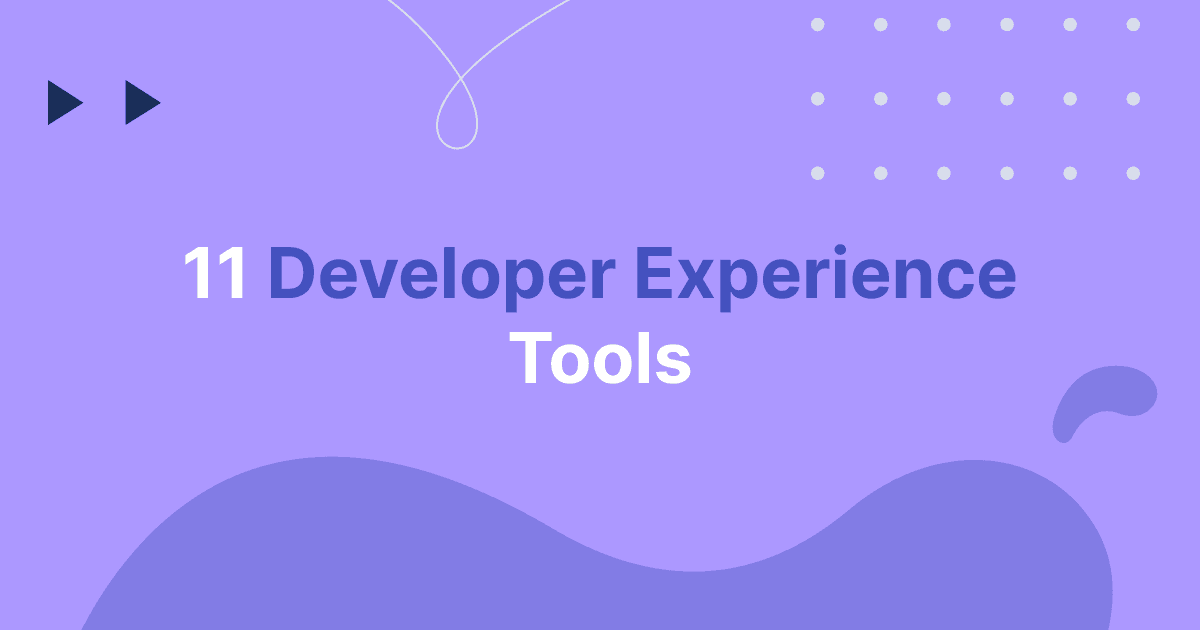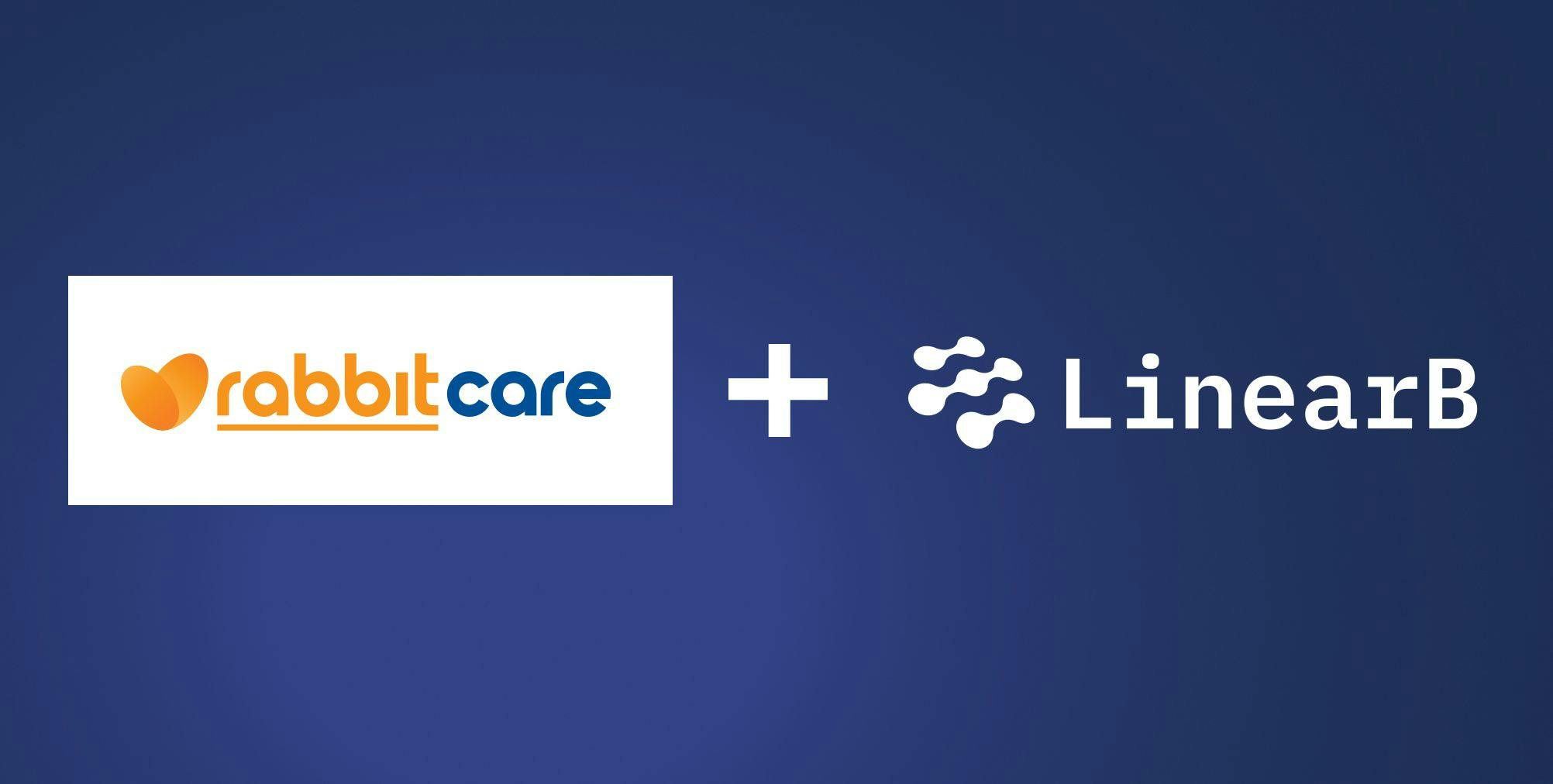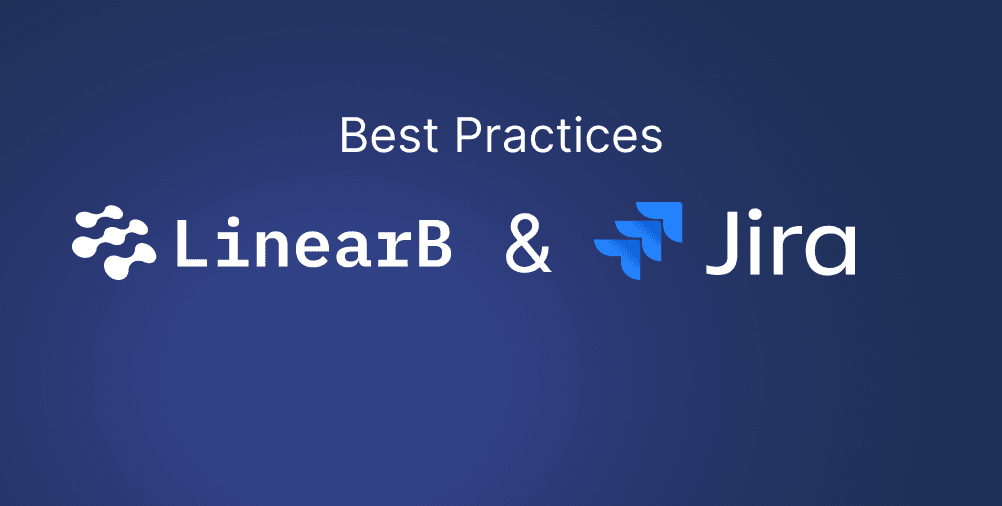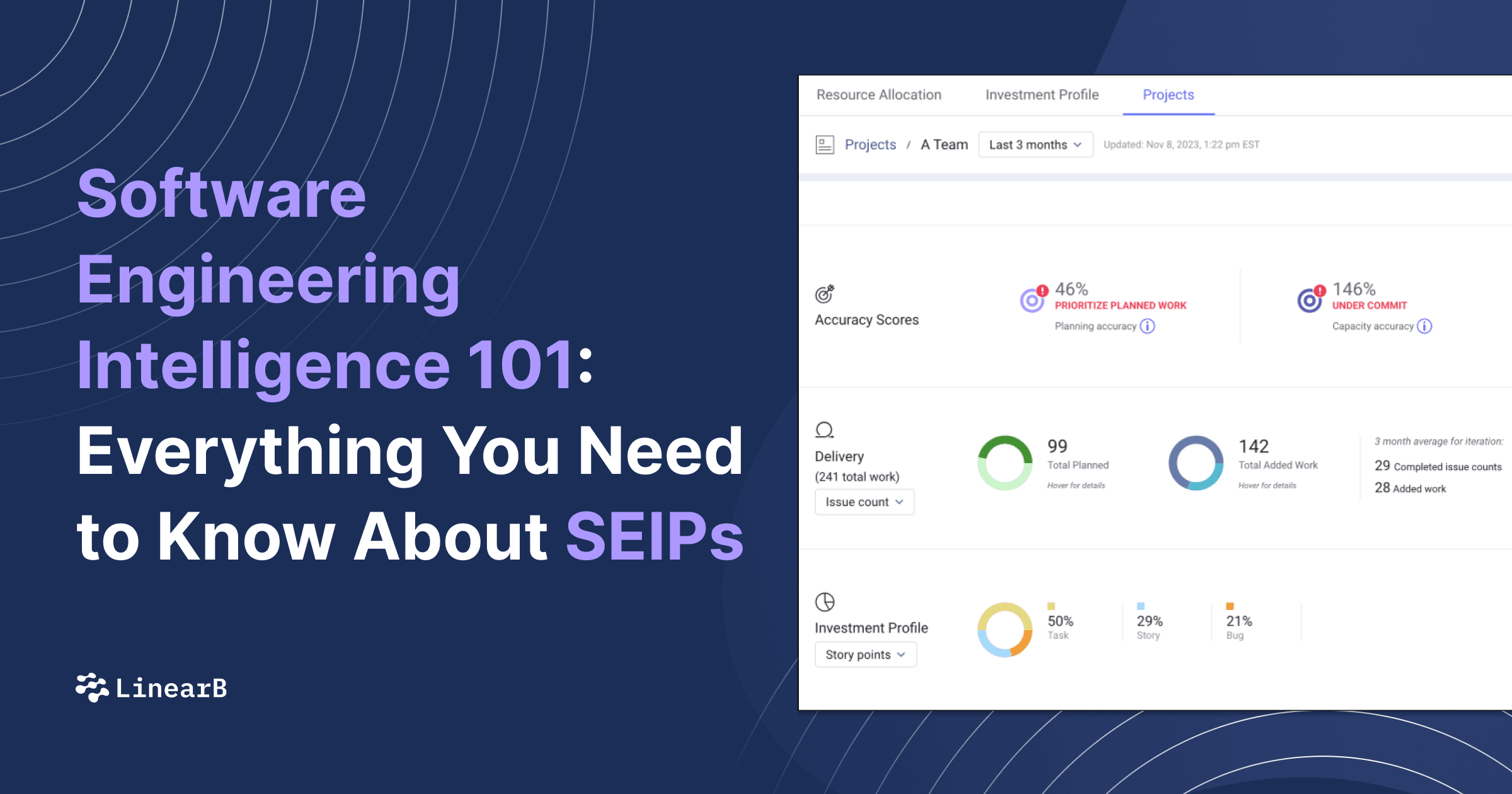How can you help devs be happier and produce better code? The answer is developer experience tools. Learn about the top 11 DX tools on the market today.
Great teams can accomplish great things, but nobody is immune to roadblocks. You’ve likely seen firsthand how poor tools or working environments can lead to decreased productivity. Fostering a positive developer experience (DX) is vital to delivering a quality product — and it makes your devs happy and healthy in the long run (which is good if you want to keep your employees). But having it is easier said than done. More than likely, you’ve got other execs pressuring you to make your teams more efficient, but you know that burning out devs isn’t the way to go.
What you need to do is increase your engineering organization’s productivity and efficiency. And the best way to do this is by improving your overall developer experience. For that, you need developer experience tools, and we’ve handpicked the best for you.
You may never personally use any of these tools, but by setting up your engineering leaders and developers with the right gear, you can build a great developer experience and make your life (and everyone else’s) easier, more efficient, and more productive.
Table of Contents
- What Is DX (Developer Experience)?
- Why Is DX Important?
- Top 11 DX Tools
- Use Developer Experience Tools to Get the Most out of Your Teams
What Is DX (Developer Experience)?
Developer experience refers to how easy it is for a developer to implement a task — whether it’s a change in the system or building something new end-to-end.
Good DX isn’t just about giving devs a break room with a pool table and bean bags. Improving DX means improving your developer’s working environment, speeding up lengthy, complicated development workflows, and optimizing processes. And one way to get great DX is by using the best developer experience tools.
Check out this awesome discussion from LinearB’s CEO, CTO, and R&D team leader that goes into developer experience and how to improve it.
Why Is DX Important?
Your dev teams are your engineering org’s lifeblood. Sure, external clients are important, but that doesn’t matter if your teams can’t get high-quality code out the door. And given the current state of the global job market, it can be hard to keep your devs working for you.
To solve these problems, you should prioritize fostering a good DX. This means you’ll be keeping devs happy (so you’ll improve your employee retention rate), but it’ll also ensure you have the most efficient processes to produce and deliver better features.
1. Better Products, Better Delivery
You want your engineering org to be productive and efficient. That’s a no-brainer. But you can’t expect your developers to be robots entirely. If you really want devs to deliver better products, you have to help them out a bit. It’s not about having them type faster — it’s about giving them what they need to do their job properly.
Using developer tools to improve developer experience and streamline their workflow can make massive strides in your dev teams’ efficiency. When devs aren’t wasting time completing tedious, manual tasks, for example, they’ll have more time to deliver features that move your engineering org forward.
2. Improved Alignment with the Business
The last thing you want to do is burn your employees out by giving them more tasks than they can handle. Of course, execs will want you to take on new projects, but you don’t want to throw your engineering org to the wolves when they can’t deliver.
If you can visualize and quantify DX metrics, like tracking how much WIP is too much or your cycle times and merge frequencies, you’ll be able to have those tough conversations with the board. You’ll have hard data that shows you (and your execs) how far along your org is in achieving its goals. You’ll also be able to spot and address any issues standing in the way of achieving maximum productivity and efficiency.
Top 11 DX Tools
The developer experience tools we’ll be talking about today improve developer experience by addressing inefficiencies and other potholes your devs have to go through daily. And this will improve your devs’ quality of life, making them much happier.
1. LinearB
As the adage goes, “You can’t improve what you can’t measure.” And this also rings true for developer experience. That’s why you need tools to measure teams’ experience. But not all metrics are equal, and you need to know which ones impact your engineering org the most — so you can maximize your teams’ efforts.
LinearB tracks three key developer experience metrics: WIP, active days, and merge frequency. Each of these metrics shows you how your teams perform and whether they’re riding the struggle bus.
You can also keep tabs on metrics like cycle time, PR pickup time, PR size, and PR review time, all of which are important for maintaining continuous merge (CM). Tracking metrics like these can show you where your teams are hitting roadblocks.
And when you can tell exactly where your teams are having a hard time, you’ll be able to alleviate some of the pressure. Ultimately, you’ll be improving processes and ensuring your devs can do their jobs with as little complication as possible.
Here’s what else LinearB can do:
- Help maximize DevOps groups’ efficiency with different metrics
- Connect data from several platforms (Slack, Jira, GitHub, MS Teams, etc.)
- Detect bottlenecks and automate improvement processes
- Help teams focus on the most important aspects of coding to speed up project delivery
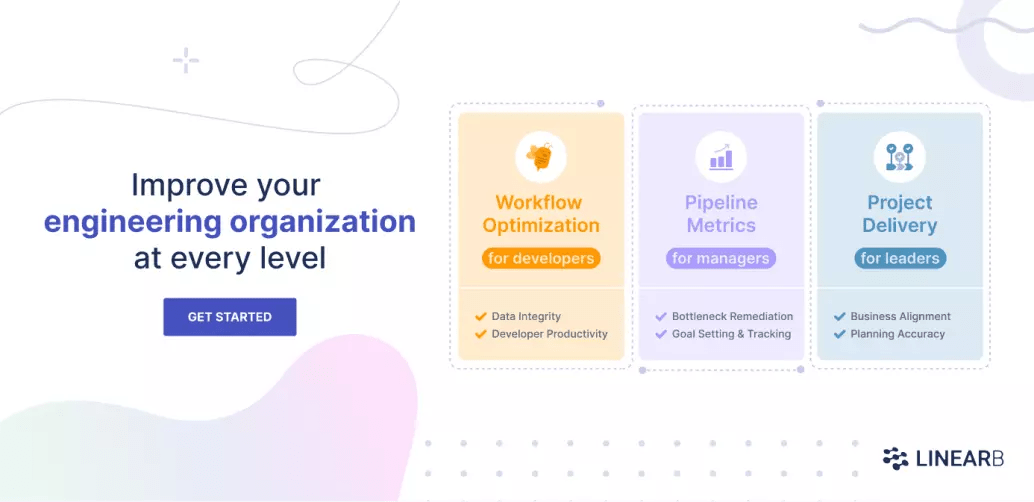
2. Clockwise
Meetings suck; we all know this. They suck up precious time, drag devs out of their productive flow states, and can clog up a weekly calendar. But unfortunately, meetings are a necessary evil. You can’t just make your team leaders stop having meetings, but you can improve how they schedule them.
Clockwise is a valuable tool for managing team schedules, allowing your engineering managers to ensure meetings are intentionally scheduled and don’t interrupt devs in their flow state. When your team leads and engineering managers pick appropriate meeting times, they’ll be giving devs the much-needed space to be productive.
Developer experience tools like Clockwise protect your dev’s flow time, and that’s essential if you want them to be happy and efficient. So you should give devs the space they need instead of dragging them into meetings kicking and screaming (we hope you aren’t really doing that).
Your devs are good at what they do, so make sure they actually can do it! When you improve DX and give devs enough time to focus on their code, without a zillion interruptions, code quality will definitely improve. You’ll also be delivering value to customers much better — and much faster, too!
Here’s what Clockwise helps you do:
- Enable teams to strike a balance between meetings and coding time with the Focus Time feature
- See the most productive periods so you can schedule meetings more effectively
3. Coder
Software developers spend their first days and sometimes weeks manually installing development tools like IDEs and frameworks on local machines. But as your dev teams grow, this step becomes a huge time and money drain. Coder automates away this manual step.
You can have your engineering leaders use this DX tool to automate environment setups and help your developers get started with what matters most — writing code. You’ll also have consistent environments across development teams, removing the friction that can pop up when devs aren’t on the same page. With a solid baseline for all your devs to work with, new hires won’t miss a beat during the onboarding process, and existing devs will always have access to what they need.
The less complex you make it for your team leaders and devs to get down and dirty with your code base, the better it is for their overall DX. Developer experience tools like Coder give developers confidence that their code will work in CI and production, boosting their capability to collaborate and cutting out the need for rework. This means you won’t be wasting any time trying to get people up to speed, and this will greatly impact your delivery.
Here’s what else Coder does:
- Lives in your on-prem or cloud infrastructure, so it gives devs more computing power
- Enables devs to work more smoothly without interruptions from slow machines and downloads
- Helps devs ship more code by removing bottlenecks to flow
4. Swimm
Your devs need documentation to refer to. Nobody will be able to stare at a codebase and understand every nook and cranny a team has mapped out, but not every engineering org has the time or resources to fully document a codebase from scratch.
Swimm is a DX tool borne out of the notion that engineers should have the tools to swim rather than be thrown into the deep end when onboarded. It aims to help developers ramp up to any codebase independently. And with good documentation, your dev teams will always know exactly what to look for when they’re stuck. No more devs lost in an endless sea of comments in code!
When you build thorough documentation, you can reinforce your teams’ sense of culture. With that, they’ll be proud to work on their projects. Swimm gives engineers and dev teams great documentation that helps them write better code, which is exactly what everyone wants.
Here are some more Swimm features:
- Checks documentation pushed to Git automatically to make sure it’s up to date
- Alerts you if the code mentioned in your documentation changes
- Helps you improve your documentation’s accuracy
5. WorkerB
An average of 31% of WIP branches aren’t linked to Jira issues. That means you’re 31% blind when making decisions and reporting on your teams’ health. Unfortunately, your devs hate Jira. It’s often put together by people who aren’t writing code, and it’s better for project managers than developers.
But what if you could use developer experience tools that make it easier for teams to work with Jira? The WorkerB bot improves Jira ticket management by using Slack and MS Teams to create and update Jira tickets with one click. Your devs won’t have a hard time updating Jira tickets anymore, so they’ll be much happier. And as a result, you’ll get better data hygiene in your reporting and planning.
But WorkerB does even more than that:
- Streamlines code review processes
- Gives PR context to reviewers directly in Slack or MS Teams
- Allows reviewers to handle PRs with fewer than 5 lines of code straight from Slack or MS Teams
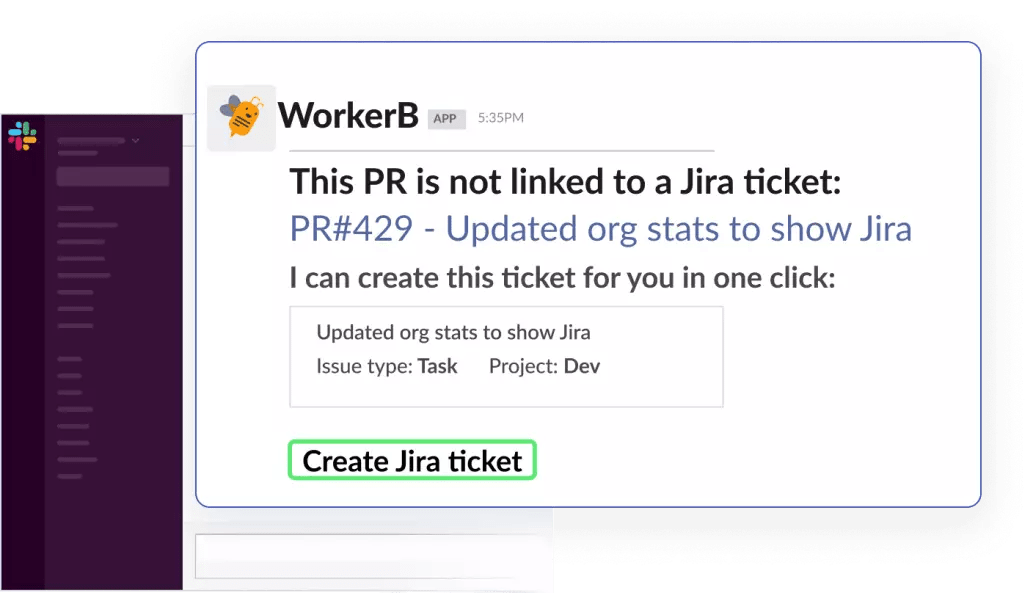
6. Harness
Devs love automation, and automating a CI/CD pipeline makes a huge difference for your teams. With automation, dev teams can spend less time on the boring stuff and more on what excites them. So how can your engineering org automate its pipeline safely while still being efficient?
If you’re unfamiliar with Harness, it’s a CI/CD platform for cloud and on-premises projects. Your devs can have the need for speed — but without crashing and burning. It enables your CI/CD pipeline to thrive and your devs to deliver confidently while keeping security and stability at the forefront.
DX tools that take off the mental load of pipeline automation increase DX directly by giving your teams less to worry about in their day-to-day. And when devs aren’t spending hours doing repetitive tasks (and getting frustrated by them), they’ll be producing code more efficiently. And they’ll also be adding value to your products, helping you deliver on promises to the execs.
Check out some more Harness features:
- Enables DevOps engineers to automate code testing, deployment, and rollbacks
- Offers ready-made CD pipeline templates such as blue/green, canary, and rolling deployments
- Allows teams to build custom templates to fit project needs without sprawling infrastructure
7. gitStream
Continuous merge is the practice of improving merge efficiency by classifying pull requests based on change size and complexity. It’s a great extension to the CI/CD process, but it can be a pain to implement without automation. Enter gitStream, one of the first continuous merge tools.
gitStream takes away the bottlenecks that come with your dev’s workflow. We’ve already talked about how automation improves DX, and gitStream brings that power to your dev team’s PR process. It allows teams to simplify their PRs by setting up custom review automations for your repos.
gitStream helps teams push through small PRs that don’t need constant manual review or sends them to specific team members to be addressed instead of getting stuck in reviews, reducing the overall cognitive load. Needless to say, devs will feel great when it’s easier for them to get their code merged, and they’ll be more excited to get even more features done!
Here’s what you can do with gitStream:
- Merge PRs that only involve minor changes to images or documentation automatically
- Reroute more complex PRs automatically to technical experts or several reviewers
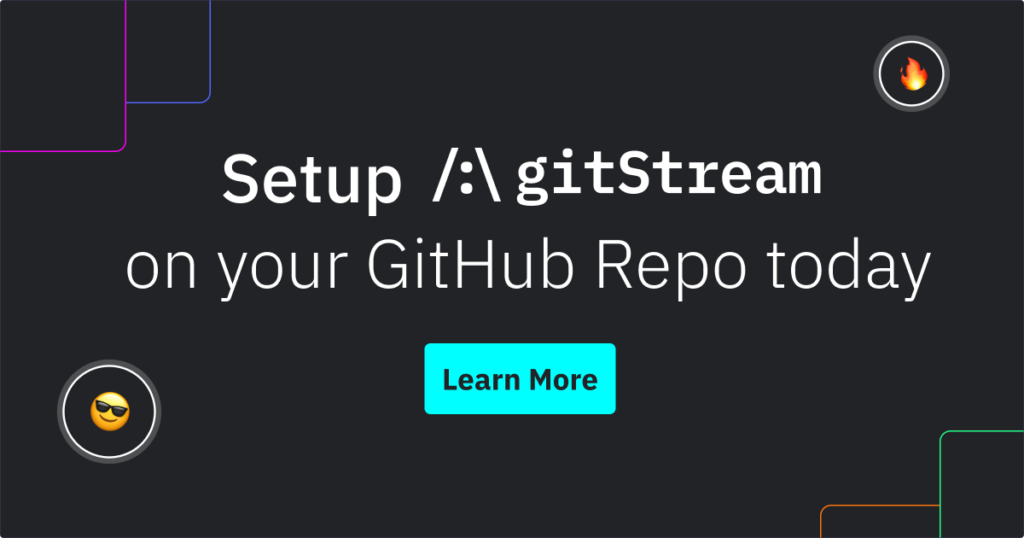
8. Sourcegraph
Codebases can get huge. And trying to hunt and fix errors across your entire codebase is a nightmare of a task that no dev wants to do. That missing bracket has plagued junior devs and CTOs alike. And unexpected downtime means lost revenue, which impacts everyone on the ladder, not just your devs.
Sourcegraph is a code intelligence platform that helps devs answer questions in their code by searching and understanding their organization’s source code. It enables engineering orgs to improve code security, accelerate developer onboarding, resolve incidents faster, streamline code reuse, and boost code health. When your devs can fix issues with confidence, it increases their overall mood and speeds up the testing cycle, so they can deploy faster and more often.
This DX tool helps you avoid downtime, so your devs’ mental health can be in tip-top shape. And because downtime = revenue lost, your whole organization can benefit from this developer experience tool.
Here’s what else Sourcegraph helps you do:
- Identify the root causes in code, why a problem happened, and its impact on other services
- Fix the issue everywhere to ensure it doesn’t happen again
- Track remediation initiatives to completion with automated fixes and pull requests
9. CodeSandbox.io
Collaboration is an excellent way for teams to grow. But it also helps individual devs get over roadblocks in their daily work. However, as the shift to remote work gets closer and closer, it’s a lot more difficult for teams to get together and collaborate outside of meetings. This means devs may start feeling isolated and struggle to overcome obstacles. And that’s a recipe for poor DX if we’ve ever seen one.
But one of the best developer experience tools that helps teams work together is CodeSandbox.io. For developers, its primary purpose is to simplify code sharing and instantaneous feedback. Instead of waiting on devs to manually configure an environment, it relies on pre-existing templates.
And these features help your team leaders improve collaboration between devs. They even allow them to get straight to work without needing to memorize and set up a new environment to help a friend. When you use collaboration DX tools, your engineering org will be like a well-oiled machine, with all parts working in tandem to ensure you deliver high-quality products on time.
Here’s how CodeSandbox.io helps you improve your DX:
- Provides a simpler environment for devs to collaborate
- Helps developers work together and tackle coding issues
- Removes the need to integrate complex containers like Docker just for collaboration
10. Launchable
Another common issue that can impact developer experience is testing. You probably know that heart-wrenching feeling when you spend hours working on a piece of code and writing tests — only for it to fail. Ouch… So what if you could save your devs from this broken heart?
Launchable is a developer experience tool that’s here to send your dev’s woes sky-high. This tool utilizes machine learning to automate your dev team’s testing, improving productivity and reducing the mental anguish that comes with testing. It can latch onto your existing git repos, learn from existing test suites, and add an improved layer of testing to their CI/CD pipeline.
And when dev teams aren’t always cramming to pass these tests — and picking up the pieces if they fail — they’ll have an easier time focusing on creating new, high-quality code. They also won’t despise the entire testing process, which means they’ll be more likely to do it more efficiently.
With Launchable, you can:
- Reduce the cognitive load of manual testing and mental anguish when a piece of code doesn’t pass
- Save your devs hours by automating the testing process
11. Postman
APIs are quickly becoming the focal point of development, not just for your developers, but some customers too. But they can be massively complex and hard to refer to or build properly, especially when you have more endpoints than you can shake a stick at. So, you can give teams developer experience tools to reduce the struggle of working with APIs.
Postman is the de-facto standard when it comes to working with APIs. Some of your devs may have already used it before, too. It allows your team leaders to simplify the API development process and work together to build a fleshed-out API quickly, from design to deployment.
With this DX tool in place, your engineering leaders have a platform that allows them to navigate and document your API with better documentation, collaboration, and testing. Reducing the cognitive load your dev teams need to memorize and test your API can help them focus that energy on new features and endpoints instead — and isn’t that what we all want?
Postman allows your developers to:
- Design, create, document, and test APIs all in one central platform
- Decrease the cognitive load that comes with sprawling APIs
Use Developer Experience Tools to Get the Most out of Your Teams
Developer experience is absolutely crucial for an engineering org. You can’t expect your teams to be productive if their environment is riddled with difficulties left and right. And in the middle of all this economic turmoil, you can’t afford to have devs turn their back on you. Investing in DX tools will reduce obstacles, keeping your team leaders on track with happy dev producing quality code on time.
Your devs’ happiness will shine through in the code they produce, resulting in the best end possible product. You’ll see the positive effects of great DX will ripple throughout the entire company, and you’ll be glad you spent the time to choose and implement the best developer experience tools.
